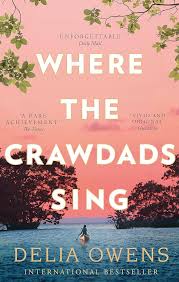49. Disguises
byDisguises played a key role in the courtroom drama of 1970, when a witness named Larry Price, a modestly dressed Trailways bus driver, took the stand to discuss the events surrounding Chase’s death. Price’s testimony, under the direction of prosecutor Eric, aimed to strengthen the narrative that it was possible for someone to travel between Greenville and Barkley Cove in a single evening. Price, who had driven that very route the night of Chase’s death, also made it clear that none of the passengers on board that night resembled Kya Clark, the woman accused of murder. However, what initially seemed like an innocuous piece of testimony began to take a much more dramatic turn as Eric shifted focus to a specific passenger Price had noticed.
This particular passenger, described by Price as a tall, slender individual, was said to have appeared as a man but might have been a woman attempting to disguise herself. Price, seemingly recalling details of the encounter, explained how this person had kept to themselves throughout the journey, not engaging with others, and maintaining a lowered head for the entirety of the trip. The clothing was described as loose-fitting, with a bulky blue cap, which, according to the prosecutor, could have been a clever attempt at concealment. When Eric posited the possibility that this mysterious passenger could have been Kya, dressed to disguise her identity, Price agreed, adding that Kya’s long hair might have been hidden beneath the hat. In an effort to link Kya directly to the crime, Eric had her stand in the courtroom, using her height and build to compare her to the man Price had described. This strategy, aimed at implicating Kya in the crime, relied heavily on these visual comparisons, pushing the theory that Kya may have traveled undetected under a disguise on the night of October 29, the night that Chase had tragically died.
However, the defense, led by Tom Milton, wasted no time in challenging the validity of Price’s observations. During cross-examination, Milton questioned the clarity of Price’s memory and pointed out that, initially, Price did not seem to consider the passenger to be a disguised woman at all. He further stressed that the idea of the passenger being Kya had only been suggested after the sheriff had made the initial connection, which cast doubt on the independence of Price’s recollections. Milton also brought up the crucial point that Price could not confirm with certainty that this “thin man” had actually been on the bus the night of the murder. Without concrete evidence to back up this claim, Milton made it clear that the testimony was speculative at best. He pointed to the lack of any definitive proof that the mysterious passenger was indeed Kya and suggested that Price’s testimony had been influenced by suggestion and possibly even bias.
The chapter underscores the delicate nature of eyewitness testimony, highlighting how easily memory can be manipulated by subtle suggestions or biases. In this instance, the prosecutor’s attempts to tie Kya to the crime scene through a potentially faulty witness account raises significant doubts about the fairness of the trial. The case hinges not on indisputable facts but on subjective interpretation and the ability to persuade the jury to believe a certain narrative. The defense’s counter-arguments expose the weaknesses in the prosecution’s case, suggesting that the focus on Kya’s possible disguise may be more about creating a compelling story than about presenting hard evidence. This dynamic between the two sides reflects a broader theme in the trial: the manipulation of perceptions, whether through the power of suggestion, the interpretation of circumstantial evidence, or the crafting of a narrative that fits the prosecution’s goal.
As the courtroom battle unfolds, the strategies employed by both the prosecution and defense reveal the complexities of justice, where the truth can be obscured by competing stories and the influence of external factors. Kya, a figure of both mystery and vulnerability, finds herself at the mercy of a system that often fails to recognize her humanity. The testimony of Larry Price, intended to bolster the prosecution’s case, ultimately exposes the fragile nature of eyewitness testimony and the ease with which it can be distorted. This chapter, rich with tension and uncertainty, brings to light the challenges faced by the defense as they try to protect Kya from the weight of these assumptions and potentially flawed recollections. The courtroom becomes a microcosm of the broader societal issues at play, where perception often trumps reality, and where those who are marginalized are more easily misjudged or misunderstood.


